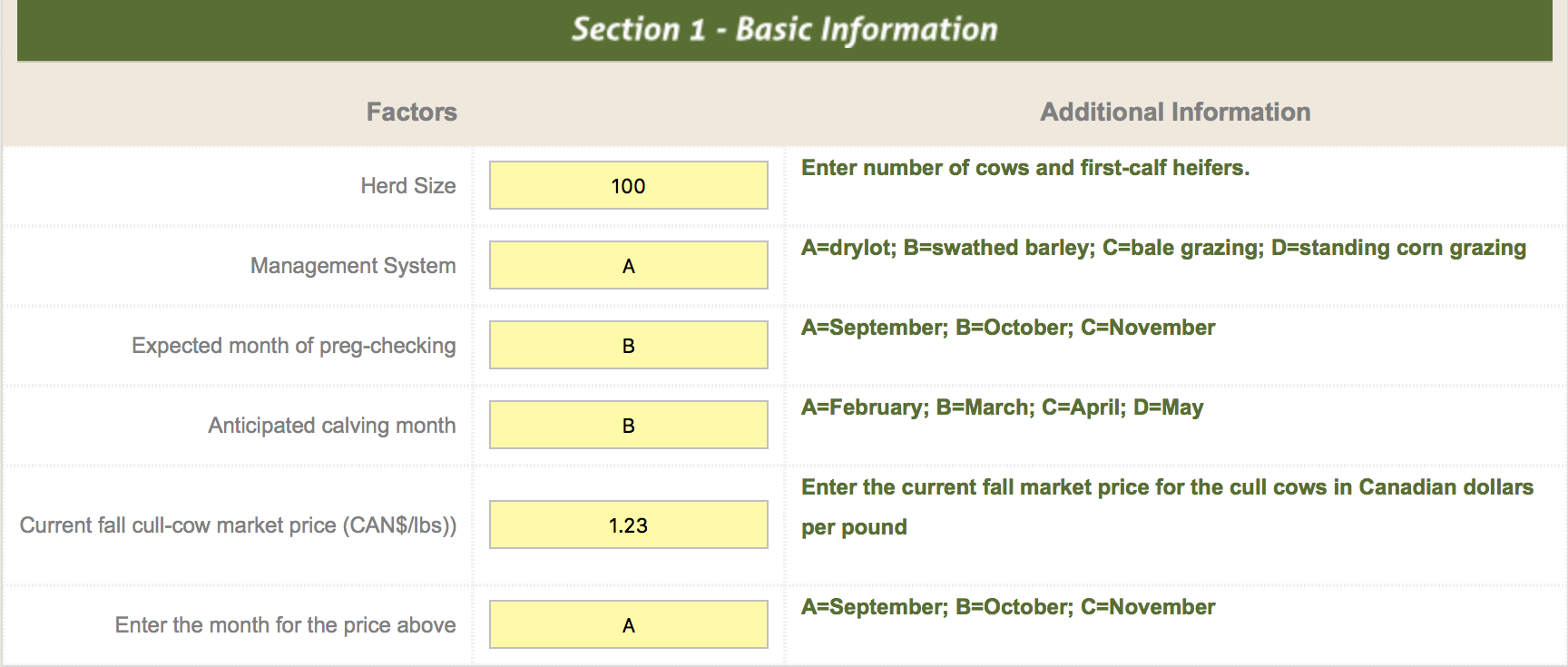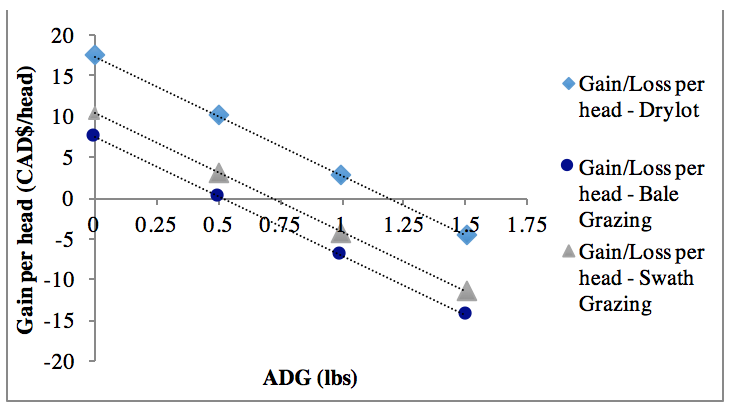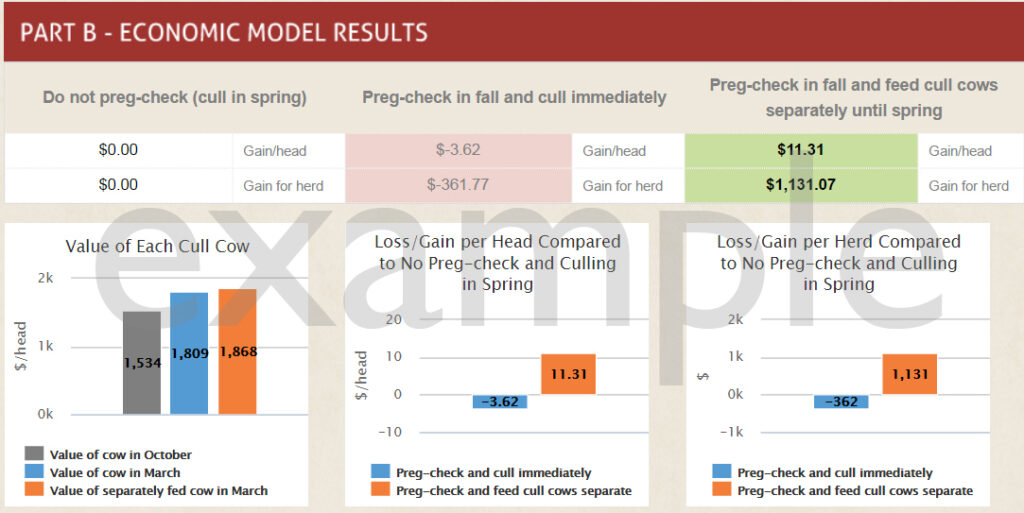Try This New Calculator to Determine When it Pays to Preg-Check
According to the 2015 Western Canadian Cow-Calf Survey, 60% of producers include pregnancy detection as part of their management strategy. That’s up from 49% nearly two decades ago, according to the 1997/98 Alberta Cow-Calf Survey results, and up from 34% reported by the 1987-89 Alberta survey.
But the question remains as to why 40% of producers in Western Canada choose not to preg-check their cows.
Assuming a spring calving schedule, generally producers have three options for
managing open cows:
- Preg-check cows in the fall and cull opens immediately
- Pros: Realize value of cull cows in the fall and avoid incurring costs of overwintering open cows.
- Cons: Incur vet costs and forgo the value of cull cows in spring during higher market prices.
- Preg-check in the fall and feed open cows separately to market at a later date
- Pros: Avoid selling during the lower market prices during the fall and add weight to cull cows before they’re sold
- Cons: Incur vet costs, absorb overwintering costs for open cows, and supplemental feed costs
- Do not preg-check – overwinter all cows together and cull opens in the spring after the herd has finished calving.
The economics of preg-checking depends on:
- cull cow market price,
- the management system employed by the producer,
- feed and overhead costs, and
- veterinary costs.

To help producers determine the most economical option for their operation based on the various factors, an economics of preg-checking model was developed by Western College of Veterinary Medicine student Elad Ben-Ezra and University of Saskatchewan Master of Business Administration (MBA) student Alex Muzzin in 2015 in collaboration with Canfax Research Services. Using the model, the developers made several conclusions:

Conclusion #1: The higher a producer’s feed and overwintering costs, the more favourable preg-checking and culling cows is in the fall.
Conclusion #2: The ADG of cull cows over the winter feeding period has a significant impact on the cow’s spring value. Higher weight gains over the winter result in higher spring values than low weight gains, regardless of the market price. ADG varies with the management system (i.e. traditional drylot vs. swath grazing vs. bale grazing).
Conclusion #3: High cull cow prices and ADG favour overwintering cows until the following spring as every pound of gain is more valuable.
Cattle market price is a much stronger driver of the economics of preg-checking than overwintering costs. Over the last ten years producers have not benefited from preg-checking and culling open cows in the fall. The loss of potential income experienced by producers for preg-checking and culling open cattle in the fall was driven largely by cattle prices increasing seasonally and annually. This may explain the significant segment of producers who still do not preg-check their herds.
Consistently higher cull-cow prices in the spring can be a strong deterrent to preg-checking. Producers in Western Canada that have overwintered their open cattle have received, on average (2005 to 2014), a market price 25.6% higher than the previous fall (October to March). However, the seasonality is quite variable, ranging from 6% in 2006-2007 to 53% in 2009-2010.
Conclusion #4: At current market prices, the strategy of preg-checking and feeding the open cow group a high-energy ration for 90 days provides the greatest economic benefit to producers – a gain of $5.16/head compared to overwintering. As cow prices have increased annually over the last decade, from the 2003 low, preg-checking has not been economically beneficial and producers have seen the greatest benefit from overwintering cattle and selling at the higher price.
Conclusion #5: Should cull cow prices drop to pre-2012 levels (below $0.75/lbs), many scenarios indicate that preg-checking and culling in the fall is a better option as the cost of overwintering begins to outweigh the benefit of selling heavier cull cows in the spring.
To determine whether this holds true for individual operations, a new decision making tool based on the economic model is now available on the Beef Cattle Research Council website, www.beefresearch.ca. Producers can visit the interactive webpage to help make their management decisions.
When producers visit the webpage, they’ll find two variations of the model:
 Basic Model – requires only six pieces of information: herd size, type of management system, the month preg-checking will occur, the anticipated calving month, and the current fall month and market price.
Basic Model – requires only six pieces of information: herd size, type of management system, the month preg-checking will occur, the anticipated calving month, and the current fall month and market price.- Advanced Model – allows producers to enter custom data for their herd including: cost of production, ADG, length of winter feeding period, herd open rate, and veterinary cost to more accurately calculate the net gain or loss of preg-checking.
Both versions have the option to enter parameters for feeding cull cows as a separate group. By entering feed and overhead cost, the expected number of days on feed, and the expected average daily gain (ADG) of cows in the group, the model will calculate the expected gain or loss of preg-checking in the fall and feeding cull cows as a separate group.
Click here to subscribe to the BCRC Blog and receive email notifications when new content is posted.
The sharing or reprinting of BCRC Blog articles is welcome and encouraged. Please provide acknowledgement to the Beef Cattle Research Council, list the website address, www.BeefResearch.ca, and let us know you chose to share the article by emailing us at [email protected].
We welcome your questions, comments and suggestions. Contact us directly or generate public discussion by posting your thoughts below.
